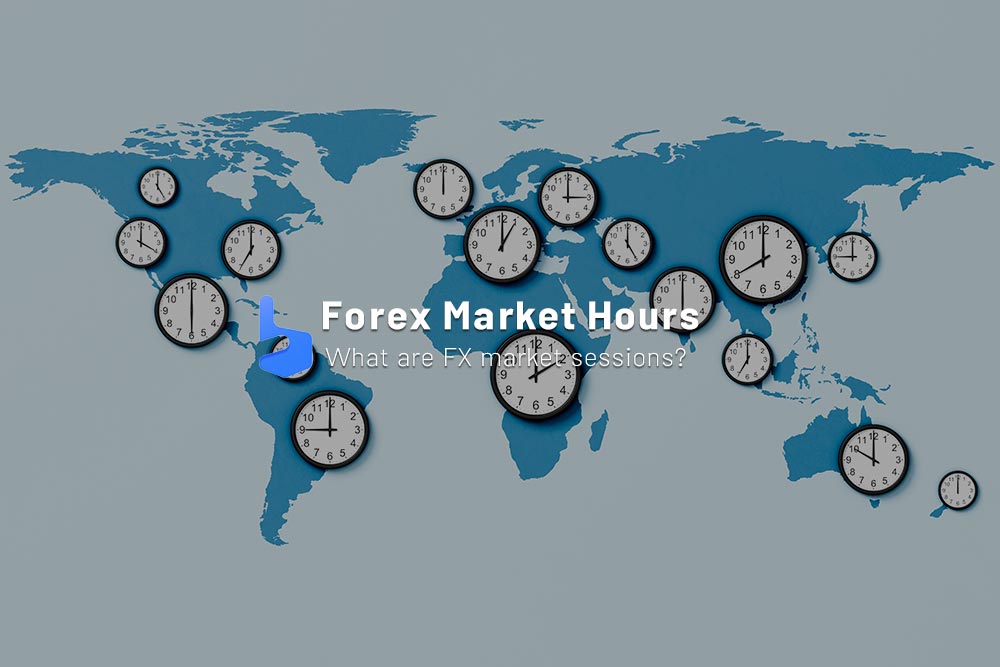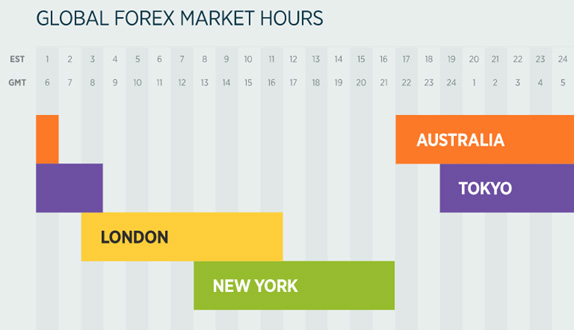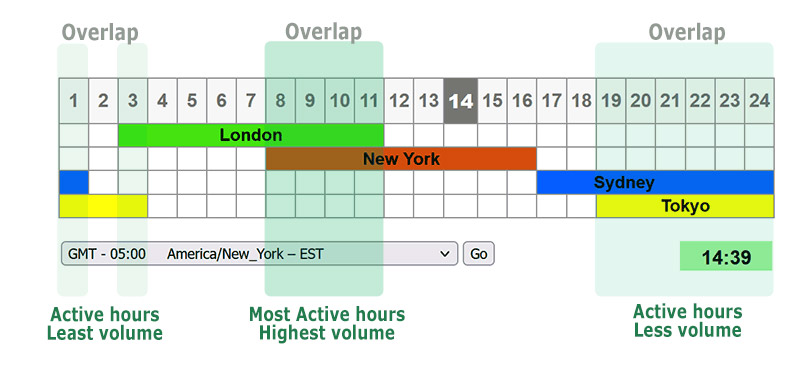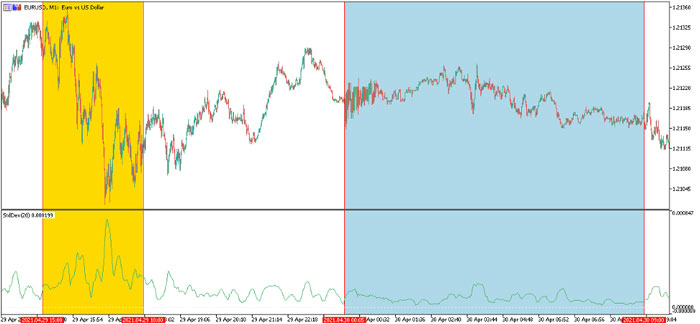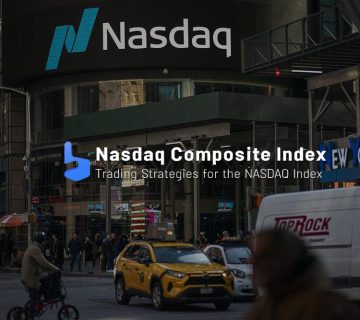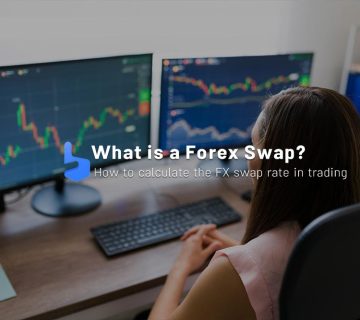What you are about to read:
Forex Market as the largest and most liquid financial market in the world even surpasses the power of the most powerful stock markets. This global hub for currency trading operates through 24-hour Forex trading sessions, five days a week, facilitating transactions worth trillions of dollars daily. In the continuation of this article on Brokerland website, we will tall about forex market hours.
Each Forex session is uniquely characterized by market dynamics, regional influences, and specific trading volumes. With the sunrise and sunset in major financial centers around the world, traders witness market activity fluctuations and price movements, presenting both opportunities and challenges for their trading strategies. Understanding these Forex trading sessions is a vital element in the effort to engage in profitable trades while avoiding potential pitfalls.
In this comprehensive article, we introduce these sessions in GMT time and examine the distinct features of each major trading period. From the swift movements of the Asian session to the overlap of the European and North American sessions, we reveal how global events and the most important Forex news and economic indicators impact currency pairs at specific times of the day, creating different Forex signals.
Forex Market Hours Worldwide
The Forex market is an interbank market where large banks act as market makers and provide their own prices. This means there are fewer trading restrictions, including when and where you can trade, unlike the stock market hours, where traders are limited to specific days and hours. This difference contributes significantly to the distinctive nature of Forex trading sessions compared to other markets, such as stocks.
The Forex market is open 24 hours a day from Monday afternoon to Friday night. This is due to different international time zones, allowing you the flexibility to trade at all hours of the day. The major Forex sessions primarily exist in these three locations:
Tokyo (Asian Session)
London (European Session)
New York (North American Session)
Certainly, these three Forex sessions operate separately. However, specific periods of the day experience higher volatility, such as the overlap from 8 AM to noon for the New York and London stock exchanges.
During the fall and winter months, the Tokyo session opens at 12 PM and closes at 9 AM UK time. It’s one of the largest Forex trading centers globally, with approximately one-fifth of all Forex transactions taking place during this session. During the Asian session, there is likely to be more movement in currency pairs with the yen and also Asia-Pacific currency pairs like AUD/USD.
London Forex market hours start at 8 AM UK time and make up almost 35% of total Forex transactions (estimated at £2.1 trillion daily). Due to the high trading volume during the London session, Forex spreads are likely to be lower because of increased liquidity. Nevertheless, the London Forex trading session also experiences significant fluctuations, often creating optimal trading conditions for major currency pairs due to the higher trading volume. This session concludes at 4 PM.
Sydney Forex market hour operates from 8 PM to 5 AM UK time, completing the 24-hour trading cycle of Forex sessions.
Overlap of Forex Trading Sessions
As you will notice from the opening and closing times of Forex sessions, there are periods of the day when two sessions are simultaneously open.
These overlaps represent the busiest times of the day for Forex market hours, simply because more participants are active in the market. Traders can expect both higher volatility and liquidity during these hours, making them among the best times of the day for trading.
Understanding the different Forex sessions gives us an idea of when Forex currency pairs are most active throughout the day.
For instance, during the overlap of the London and New York Forex sessions, indicating the busiest trading time of the day, you can expect EURUSD and GBPUSD to be at their most active states with high fluctuations and liquidity. On the other hand, the fluctuations and liquidity in both of these pairs during the Sydney session will be significantly lower.
This is illustrated in the EURUSD chart below, where the highlighted section in yellow indicates the overlap between the London and New York sessions, and the section marked in blue represents the Sydney session. The standard deviation indicator along the bottom of the screen displays the level of market fluctuations – significantly higher during the session overlap.
Therefore, if you are a Forex trader benefiting from fluctuations, you can infer from different market hours and Forex sessions which time of day is most suitable for trading specific currency pairs. Similarly, if your trading style dictates avoiding high volatility periods, you can analyze which times of the day you should likely stay away from the markets.
When is the best time to trade Forex?
In theory, the most effective time to trade Forex is when the market is in its most active state, meaning the time with the highest trading volume. This provides higher liquidity and narrower spreads. Therefore, the optimal time for trading, as mentioned earlier, is during the overlap between the London and New York Forex sessions.
During this period, there are also high fluctuations, so despite initially having narrower spreads, major economic news announcements can widen spreads. However, high volatility can be desirable when trading in the Forex market.
The London session is also the busiest market, especially midweek. However, trading on Fridays experiences less volatility, as there are fewer participants, resulting in reduced liquidity. Another consideration is what currency pair you are trading; for example, trading with the yen during the Asian session may be more suitable.
The most volatile currency pairs
Fluctuations depend on the liquidity of a currency pair and are determined by the price movement in a specific time period. This factor affects spreads and is represented by the number of pips. Certain currency pairs naturally exhibit higher fluctuations. The working hours of each Forex trading session can impact the fluctuations of a currency pair at specific points during the day, leading to an increase or decrease in volatility. Some of the The most volatile currency pairs are:
- AUD/JPY
- NZD/JPY
- AUD/USD
- GBP/AUD
Major currency pairs, compared to exotic pairs, have lower fluctuations since lower liquidity usually leads to lower volatility. Currency pairs from more developed countries tend to have less volatility, as their prices are generally more stable, and there is less demand for currency from emerging markets.
What causes fluctuations in Forex sessions
Significant news events, such as Brexit, can cause fluctuations in the Forex market and increase spreads. Additionally, price fluctuations can be influenced by interest rate hikes or commodity price increases.
Trading low-liquidity currency pairs inherently carries higher risk, and it is recommended for more experienced traders who have conducted their research and have a risk management strategy, paying attention to the risk to reward ratio.
Conclusion
In conclusion, understanding and knowing Forex market hours are essential skills for any trader looking to advance in the fast-paced world of currency exchange. Throughout this article, we have highlighted the importance of each Forex session, from the fluctuations of the Asian session to the overlap of the European and North American sessions.
By aligning your trading strategies with the market sentiments discussed in sentiment analysis, you can increase your chances of success and minimize risks during specific time zones.
The Forex market remains a combination of opportunities and challenges shaped by economic events and regional influences. Adapting to the different features of Forex trading sessions allows traders to invest in favorable market conditions and confidently navigate potential challenges.

